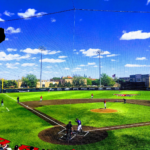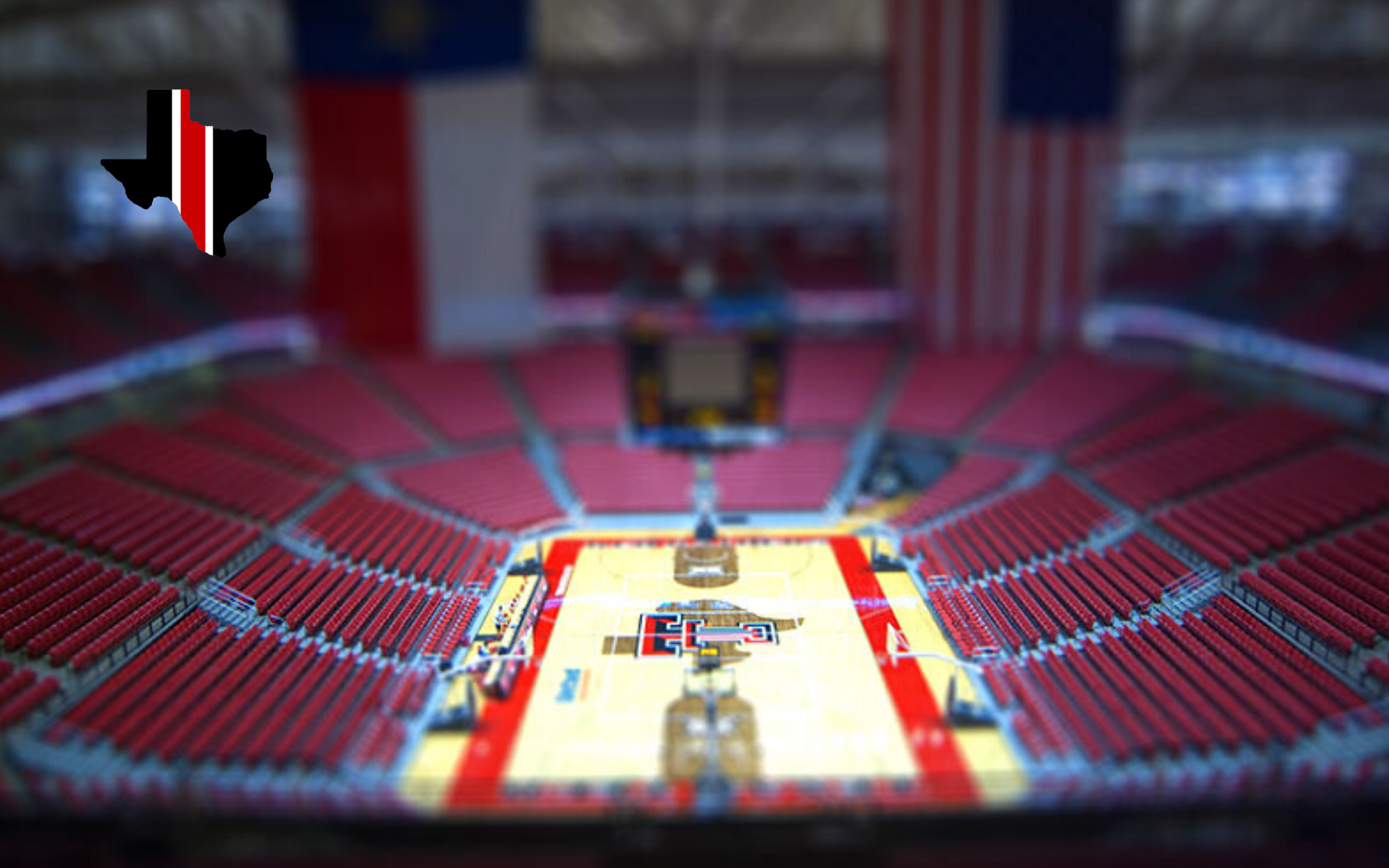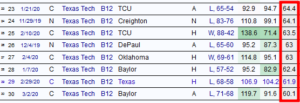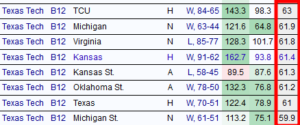Ed. Note from Seth C: Please welcome Tech Hoops Guy. You may know him from Twitter and he’s always been a fantastic follow. As a manager of the site, I’ve communicated with Tech Hoops Guy and think he’ll be a great addition to STP.
Increased Offensive Pace
At the beginning of the year, Texas Tech was running up-tempo offense. Compared to previous Tech teams, it was warp speed and probably inflated by the quality of Tech’s first few opponents.
Chris Beard with new personnel this year & a heightened emphasis on pushing in transition after makes, misses and open-floor turnovers.
This team gets up and down the floor in a hurry. #TexasTechMBB #ChrisBeard pic.twitter.com/4la0uhB4T4
— Tech Hoops Guy (@TechHoopsGuy) November 7, 2019
Last year, Tech averaged 66 poss/game against its first 3 opponents. This year, Tech's averaging 77 poss/game.
If Tech maintains a top 5 ranking among P5 teams in transition eFG%, this trend of increased tempo will continue.
Personally, I would NOT try to run w/ these guys. pic.twitter.com/Yhd7Ry6bPv
— Tech Hoops Guy (@TechHoopsGuy) November 15, 2019
On the whole, it didn’t work that well. Tech’s defense (mainly in transition) was not very good during this phase and, while Tech shot the ball well from the field in transition, too many turnovers caused Tech’s efficiency numbers to be on par with the average D1 team.
Tech has since slowed the pace down considerably, but still plays much faster than any other Beard team.
Below is shot-clock data for the 2020 team:
- 36.3% of FG attempts occurred within the first 10 seconds of the shot clock;
- 35.7% in the middle 10 seconds; and
- 28% in the last 10 seconds.
Shot-clock data for the 2019 team:
- 27% of FG attempts occurred in the first 10 seconds of the shot clock;
- 40% in the middle 10; and
- 32% in the last 10.
This is the first Beard-era team that: (1) did not attempt the majority of its FGs in the middle 10 seconds of the shot clock, and (2) attempted more FGs within the first 10 seconds than the last 10 seconds.
In other words, this year’s team plays faster on offense than any other Beard team. Playing fast leads to high-possession games; playing slow leads to low-possession games.
Of the eight games this year with the fewest possessions, Tech has lost six of them (tempo shown in the red column).
Meanwhile, two of this year’s team’s best wins were the 2nd (Louisville) & 4th (WVU) most up-tempo games, respectively.
For comparison, in the ten games last year with the fewest possessions, the 2019 team had an 8-2 record — notable games: Michigan State (slowest paced game of the year); Virginia; 30-point win v. Kansas; and Michigan.
And in the five games last year with the most possessions, the 2019 team only had a 2-3 record (loss to Duke was the fastest paced game Tech played last year).
A relatively-strong argument could be made that this year’s team is better-suited playing fast, while last year’s team played more optimally in a low-possession grinder.
Not only have Tech’s shots occurred earlier in the shot clock this year, they also look different.
Out of FGs attempted in the first 10 seconds of the shot clock by Beard’s first three teams, approximately 27% were from the 3-point line.
This year, nearly 35% of Tech’s early FG attempts were from the 3PT line, a pretty substantial increase from the three previous years.
(Note also that the new shot clock rules would make it less likely for FG attempts to occur in the first 10 seconds of the shot clock — since it resets to 20 seconds after a foul or offensive rebound.)
This year’s team is also different with respect to who’s attempting these late-clock shots. This player is usually a team’s best offensive creator. And it’s not an easy job. Across all levels of basketball, shooting efficiency decreases as the shot clock ticks away.
Last year, Jarrett Culver took the most shots in all the 10-second thirds of the shot clock.
The year before that, Keenan Evans took the most in the middle and later thirds (Zhaire Smith was an unstoppable freight train in transition and, as a result, attempted the most within the first 10 seconds).
In 2017, Keenan took the most in all the 10-second thirds of the shot clock.
This year, though, Jahmi’us Ramsey’s attempted the most in the first & middle 10 seconds, while Kyler Edwards has attempted the most in the last 10 seconds (by quite a bit, too).
Kyler’s also attempted the most FGs during the last 5 seconds of the shot clock, when teams typically shoot the worst. Terrence Shannon is a good bit behind Kyler in terms of late-clock shot volume, and then Ramsey/Morretti/Holyfield are behind Shannon, all about the same.
This is not the way Beard’s other offenses were structured, when Culver & Keenan carried the scoring responsibilities for every phase of the shot clock, including the most difficult late-clock moments.
Really Good but Inconsistent Offense
Of course, this year’s offense has been really good in terms of its per-possession scoring efficiency. Historically good, even.
In the Kenpom era (since at least 2002), Tech hasn’t finished better than 4th (last year) in the Big 12 in offensive efficiency. This year’s team — in Big 12 games only — was 2nd in the conference in scoring efficiency.
Thus, relative to our peers within the conference, this year’s team was the most efficient offense (in terms of per/possession scoring) that Tech’s fielded for a Big 12 regular season.
Oklahoma State, Iowa State, & TCU: Tech scored more points/poss against these teams than any of their other opponents this year.
Kansas State, West Virginia, & Kansas: Tech scored the 2nd or 3rd most points/poss against these teams.
Only UT can say with a straight face that Tech’s offense did not cause them problems in at least one match up this year.
Admittedly, there’s also been a feast-or-famine element to this year’s offense, with the 2nd & 3rd worst offensive Big 12 games in the Beard era occurring this year (@ West Virginia & @ Oklahoma).
I think it frustrates Beard in press conferences when questions imply that Tech’s struggled offensively, because he’s pointed out some of these numbers in his responses.













